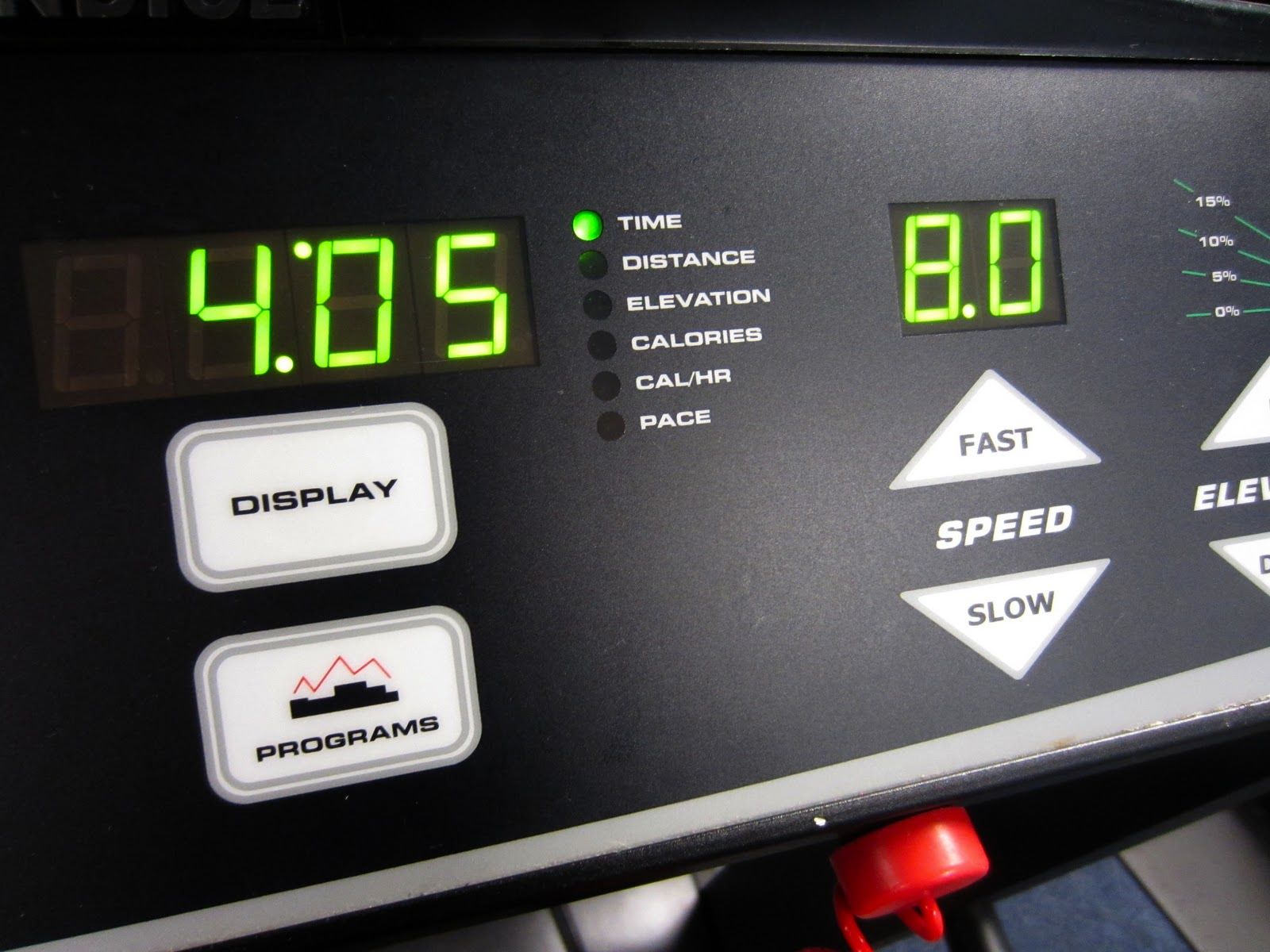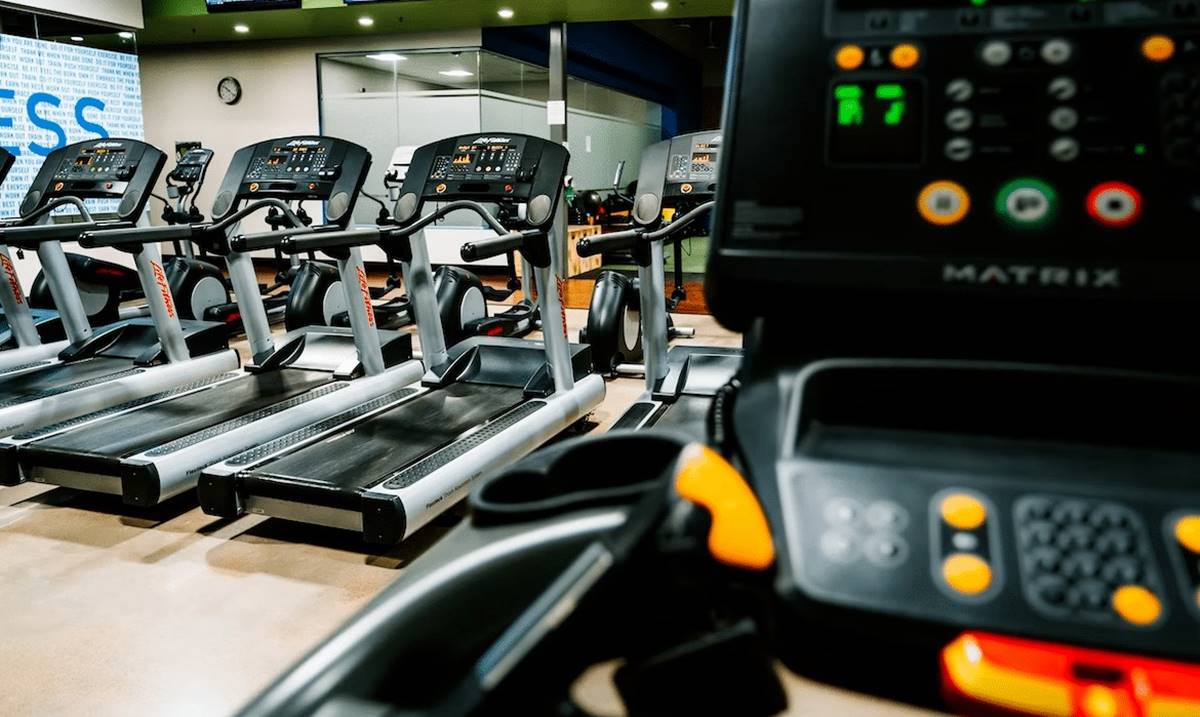

Featured
What Is Pace Per Mile
Published: October 5, 2023
Discover what pace per mile is and how it can help improve your running performance. Get featured tips and insights to enhance your training routine.
Introduction
Pace per mile is a crucial term in the world of running, referring to the time it takes for a runner to complete one mile. It is commonly used as a measurement of speed and endurance, providing valuable insights into a runner’s performance and progress. Whether you are a beginner or a seasoned runner, understanding pace per mile is essential for setting goals, tracking improvement, and achieving optimal results.
When it comes to running, the pace per mile can vary significantly among individuals. Some runners may be able to maintain a fast pace consistently, while others may need to work on building their speed gradually. Regardless of your current abilities, knowing your pace per mile is essential for planning training sessions, participating in races, and reaching personal milestones.
Monitoring your pace per mile allows you to gauge your level of exertion, ensuring that you are not pushing too hard or not pushing hard enough. By maintaining an appropriate pace, you can optimize your performance and reduce the risk of injuries or burnout. It also helps you set realistic goals and track your progress over time, enabling you to make adjustments to your training plan as needed.
Understanding and improving your pace per mile is not only important for competitive runners but also for recreational runners. It helps you become more efficient and confident in your running, allowing you to enjoy the benefits that come with increased fitness and stamina. Whether you are running for pleasure, health, or training for a specific event, pace per mile is a fundamental aspect of your running journey.
Definition of Pace Per Mile
Pace per mile is a term used to describe the amount of time it takes for a runner to complete one mile. It is typically measured in minutes and seconds, indicating how quickly or slowly a runner is able to cover the distance. Pace per mile is an essential metric in running, as it provides valuable information about a runner’s speed, efficiency, and overall performance.
The pace per mile is calculated by dividing the total time taken to complete the mile by the distance covered. For example, if a runner completes a mile in 8 minutes, their pace per mile would be 8 minutes. Pace can also be expressed in terms of speed, such as miles per hour or kilometers per hour, but pace per mile is the most common measurement used.
Understanding your pace per mile is crucial for a variety of reasons. It helps you to set realistic goals and track your progress over time. It also allows you to gauge your level of exertion during runs, ensuring that you are not overexerting yourself or pushing too hard. By maintaining an appropriate pace, you can optimize your performance, improve your endurance, and reduce the risk of injuries or burnout.
Pace per mile can vary significantly among different runners. Elite runners, for example, are capable of maintaining a fast pace consistently, often completing a mile in under 5 minutes. On the other hand, beginner runners may have a slower pace, perhaps taking 10 minutes or more to complete a mile. However, it’s important to note that pace is relative to an individual’s fitness level and goals. What may be considered a slow pace for one person could be a fast pace for another.
Pace per mile is an essential metric for both competitive and recreational runners. It is used in races to determine the winners based on their overall time and pace. It also provides valuable feedback on a runner’s performance and improvement. By tracking your pace per mile, you can identify areas where you may need to increase your speed, adjust your training, or focus on building endurance.
Importance of Pace Per Mile in Running
Pace per mile plays a crucial role in running, regardless of whether you are a competitive athlete or a recreational runner. Understanding the importance of pace per mile can help you set goals, track progress, and make necessary adjustments to your training regimen. Here are some key reasons why pace per mile is significant in the world of running:
1. Performance Evaluation: Pace per mile serves as a valuable metric to evaluate your running performance. By tracking your pace over time, you can assess whether you are improving, stagnating, or regressing. It provides concrete data to analyze your progress and determine whether your training strategies are effective.
2. Goal Setting: Pace per mile is essential in setting realistic and attainable goals. By having a target pace in mind, you can structure your training sessions accordingly and work towards achieving your desired outcome. Whether it’s completing a race within a certain time or increasing your overall speed, knowing your pace per mile helps you set benchmarks and measure your success.
3. Training Planning: Pace per mile is a key factor in planning and organizing your training sessions. It helps you establish appropriate intervals, recovery periods, and overall intensity level. By incorporating varied pace per mile workouts, you can improve your speed, endurance, and overall running performance.
4. Monitoring Effort: Understanding your pace per mile allows you to gauge your effort level during runs. It helps you find the balance between pushing yourself enough to make progress and avoiding overexertion that can lead to injury or burnout. By maintaining an optimal pace per mile, you can sustain consistent effort throughout your runs and avoid hitting a performance plateau.
5. Racing Strategy: Pace per mile is paramount in competitive races, as it helps you plan your race strategy. Knowing your desired pace per mile, you can start conservatively, maintain a steady pace, or strategically increase your speed in certain sections. It helps you optimize your overall race performance and achieve your desired outcome.
6. Personal Satisfaction: Keeping track of your pace per mile allows you to see the progress you’ve made, which can be incredibly satisfying. Seeing your pace improve over time provides a tangible sense of achievement and motivates you to keep pushing yourself to new heights.
In summary, the importance of pace per mile in running cannot be overstated. It helps you evaluate your performance, set goals, plan your training, monitor your effort, strategize in races, and find personal satisfaction in your progress. By paying attention to your pace per mile, you can maximize your potential and become a better, more efficient runner.
Factors Affecting Pace Per Mile
Several factors can influence a runner’s pace per mile, and understanding these factors can help you analyze your performance and make necessary adjustments. It’s important to note that these factors can vary from person to person, and what works for one runner may not work for another. Here are the key factors that can affect pace per mile:
1. Fitness Level: A runner’s overall fitness level plays a significant role in determining their pace per mile. Generally, runners with higher fitness levels tend to have a faster pace as they have better cardiovascular endurance, muscle strength, and efficiency in their running mechanics.
2. Training and Conditioning: The type and intensity of training can directly impact pace per mile. Consistent training that includes a mix of speed workouts, long runs, and tempo runs helps improve running efficiency, endurance, and speed. Regular training sessions build stamina and conditioning, resulting in a faster pace per mile.
3. Terrain and Elevation: The terrain and elevation of your running route can affect your pace per mile. Running on flat surfaces generally allows for a faster pace compared to hilly or uneven terrains. Uphill sections may slow down your pace, while downhill sections may increase it. Keep in mind that running on different terrains can also affect your cadence and muscle engagement.
4. Weather Conditions: Weather conditions, such as heat, humidity, wind, and temperature, can significantly impact pace per mile. Hot and humid conditions can make running more challenging and slower, as it increases exertion and elevates heart rate. Similarly, strong headwinds can slow down pace, while tailwinds can provide a boost in speed.
5. Workout Intensity: The intensity level of your workouts can affect your pace per mile. High-intensity workouts, such as intervals or tempo runs, push you to run at a faster pace compared to easy or recovery runs. Incorporating a mix of intensity levels in your training helps improve your overall speed and ability to sustain a faster pace per mile.
6. Mental Factors: Psychological factors, such as motivation, focus, confidence, and mental attitude, can have an impact on pace per mile. A positive mindset and strong mental resilience can help you push through discomfort and maintain a faster pace. Conversely, negative thoughts or lack of motivation can hinder your performance and slow down your pace.
7. Health and Recovery: Your overall health and recovery play a significant role in determining your pace per mile. Factors like adequate sleep, proper nutrition, and recovery days contribute to optimal performance. Inadequate rest or injuries can affect pace and overall running performance.
It’s essential to consider these factors when assessing your pace per mile. By understanding how they influence your performance, you can make necessary adjustments to your training, develop a race strategy, and set realistic goals based on your specific circumstances.
How to Calculate Pace Per Mile
Calculating your pace per mile is a straightforward process that requires just a few simple steps. It allows you to track and measure your running speed, assess your progress, and set specific goals. Here’s how you can calculate your pace per mile:
Step 1: Measure the Distance: Use a GPS watch, smartphone app, or a known route to accurately measure the distance you plan to run. It could be a mile loop in your neighborhood, a track, or a designated running path.
Step 2: Track Your Time: Start a timer or use a stopwatch to record the time it takes you to complete the measured distance. Make sure to start the timer as you begin running and stop it when you finish the distance.
Step 3: Convert Time to Minutes: Convert your recorded time into minutes. If, for example, you completed the mile in 8 minutes and 30 seconds, you would have 8.5 minutes.
Step 4: Divide Time by Distance: Divide the time in minutes by the distance in miles to calculate your pace per mile. For instance, if you ran a mile in 8.5 minutes, your pace per mile would be 8.5 minutes per mile.
Step 5: Optional Conversions: If you prefer to express your pace in different units, you can convert it accordingly. For example, if you want to know your pace per kilometer, divide the time by the distance in kilometers. To convert your pace into miles per hour, divide 60 (the number of minutes in an hour) by your pace per mile.
Calculating your pace per mile allows you to have a clear understanding of your running speed. It serves as a baseline measurement to track your progress, set goals, and design training plans tailored to your abilities and objectives. Monitoring your pace per mile over time will help you improve your performance and give you a sense of accomplishment as you see your pace per mile improve.
Tips for Improving Pace Per Mile
If you’re looking to improve your pace per mile and become a faster runner, there are several strategies and techniques you can incorporate into your training routine. Consistency and smart training practices are key to making progress. Here are some tips to help you improve your pace per mile:
1. Incorporate Speed Workouts: Integrate interval training and tempo runs into your training plan. These workouts involve alternating between periods of high-intensity running and recovery periods. By pushing yourself to run at a faster pace during these workouts, you can improve your overall speed and increase your pace per mile.
2. Build Endurance: Long runs are essential for building endurance and improving your pace per mile. Gradually increase the distance of your long runs to train your body to maintain a steady speed over a more extended period. This will improve your overall stamina and help you maintain a faster pace per mile.
3. Strength Training: Incorporate strength training exercises to build core strength, improve running mechanics, and enhance overall muscle power. Strong muscles will help you maintain good form and efficiency, allowing you to run at a faster pace per mile.
4. Cross-Train: Engage in cross-training activities like cycling, swimming, or rowing to improve your cardiovascular fitness and build strength in different muscle groups. Cross-training helps prevent overuse injuries and adds variety to your training routine, ultimately improving your pace per mile.
5. Work on Cadence: Aim for a higher cadence or the number of steps you take per minute. Strive for a cadence of around 180 steps per minute, as it promotes efficient running mechanics and helps you maintain a faster pace per mile.
6. Implement Hill Training: Running hills can help increase leg strength and improve running economy. Incorporate hill repeats into your training, focusing on both uphill and downhill running. This type of training will translate to improved power and a faster pace per mile on any terrain.
7. Improve Your Running Form: Focus on maintaining good running form, as proper form can contribute to an efficient and faster pace per mile. Maintain a tall posture, relax your shoulders, engage your core, and push off the ground with a strong stride.
8. Gradual Progression: Avoid sudden increases in training intensity or mileage, as it can lead to overuse injuries. Gradually increase your speed and mileage to give your body time to adapt and improve your pace per mile safely.
9. Rest and Recovery: Allow your body enough time to recover between intense workouts. Adequate rest and recovery periods are essential for muscle repair and growth, ultimately improving your overall performance and pace per mile.
10. Stay Motivated: Running can be challenging, but maintaining a positive mindset and staying motivated can make a significant difference. Set realistic goals, celebrate your achievements, and surround yourself with a supportive running community to stay motivated and consistently improve your pace per mile.
By incorporating these tips into your training routine, you can improve your pace per mile and become a faster runner. Remember that progress takes time and consistency, so be patient, stay focused, and enjoy the journey of becoming a better and swifter runner.
Conclusion
Pace per mile is a fundamental aspect of running that provides vital information about a runner’s performance, progress, and overall fitness level. It serves as a benchmark to set goals, measure improvement, and track individual accomplishments. By understanding and monitoring your pace per mile, you can optimize your training, enhance your running efficiency, and achieve your desired outcomes.
Whether you are a competitive athlete or a recreational runner, paying attention to your pace per mile is essential. It allows you to evaluate your performance, set realistic goals, and plan targeted workouts to improve your speed and endurance. It also provides valuable insights into the factors that can influence your running performance, such as fitness level, training intensity, terrain, weather conditions, and mental attitude.
Improving your pace per mile requires consistency, dedication, and a smart training approach. By incorporating various strategies such as speed workouts, strength training, building endurance, and maintaining good running form, you can gradually enhance your running speed and efficiency. It’s important to remember that progress takes time and that everyone’s pace per mile is unique to their own abilities and goals.
Ultimately, improving your pace per mile is not only about becoming a faster runner but also about challenging yourself, pushing your limits, and enjoying the journey of self-improvement. Embrace the process, stay motivated, and celebrate the small victories along the way. Your pace per mile is a reflection of your hard work, determination, and commitment to becoming the best runner you can be.
So lace up your running shoes, track your pace per mile, and embark on a running journey that will not only improve your physical fitness but also boost your mental well-being and personal growth. Remember, the road to a faster pace per mile is filled with perseverance, dedication, and an unwavering belief in your abilities. Happy running!









